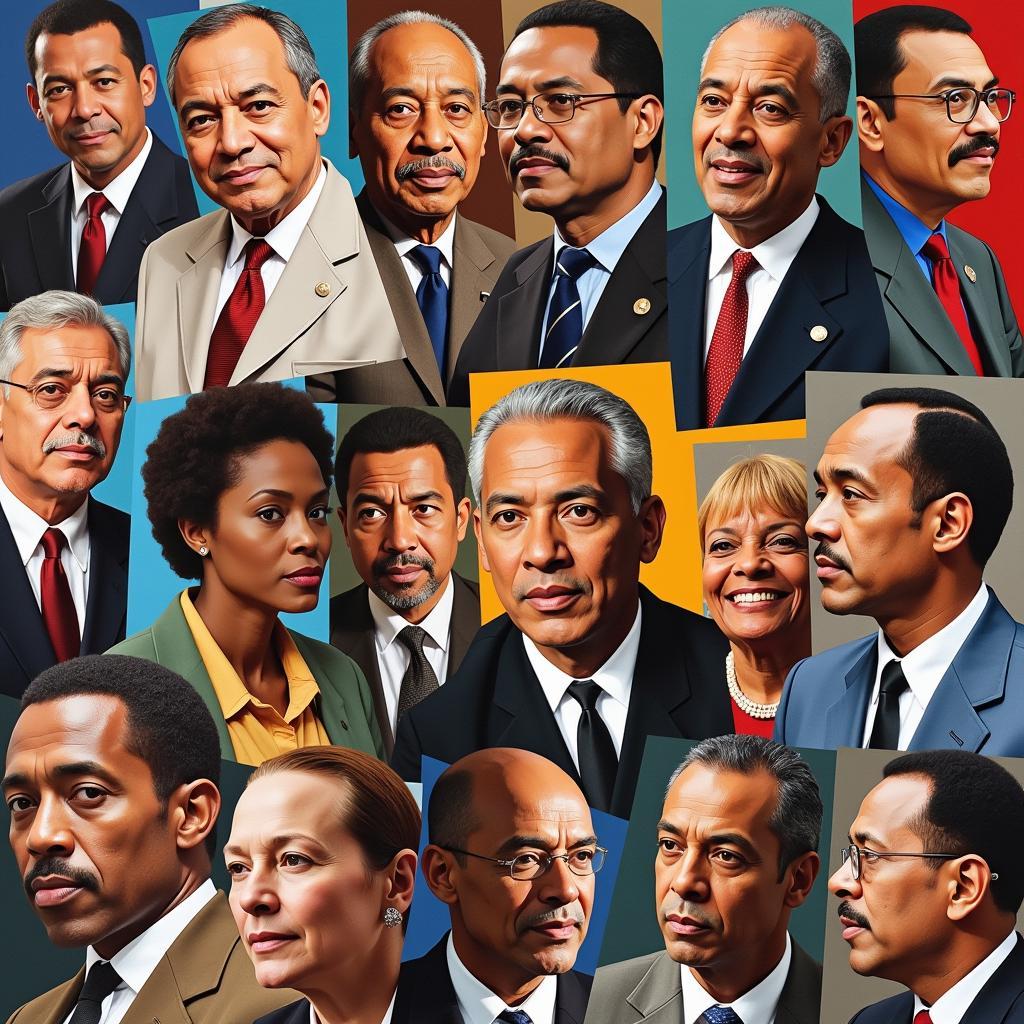African Headgear Fashion: A Celebration of Culture and Style
African Headgear Fashion is more than just a covering; it’s a powerful statement of identity, heritage, and artistry. From the elaborate gele of Nigeria to the regal Zulu isicholo, each piece tells a story, reflecting the diverse cultures and traditions across the continent. This article delves into the rich tapestry of African headgear, exploring its significance, evolution, and enduring influence on fashion worldwide.
A Symbol of Status and Tradition: Understanding African Headgear
African headgear serves a multitude of purposes, transcending mere aesthetics. It signifies social status, marital status, age, and even religious affiliation. For centuries, these elaborate headpieces have been integral to ceremonies, festivals, and everyday life, representing a tangible link to ancestral heritage. In many communities, the way a headwrap is tied or a hat is adorned speaks volumes about the wearer’s place within society. The materials used, ranging from brightly colored fabrics to beads and feathers, often reflect the local environment and resources. For example, the Himba people of Namibia use otjize, a mixture of ochre and butterfat, to create their distinctive red dreadlocks and head coverings.
Exploring the Diversity of African Headgear Styles
From North to South, East to West, the African continent boasts a dazzling array of headgear styles. The “gele,” a large, elaborately tied headwrap popular in Nigeria, is a testament to the artistry and creativity of Nigerian women. The Zulu “isicholo,” a tall, rounded hat worn by married women, is a symbol of respect and dignity. The Tuareg men of the Sahara Desert wear the “tagelmust,” a veil that protects them from the harsh sun and sand, while also serving as a mark of identity. Even the simplest headwraps, tied in various ways across different regions, reflect unique cultural nuances.
What are the most popular types of African headgear?
Some of the most popular types include the gele, isicholo, tagelmust, and various turban styles. These head coverings not only protect from the elements but also convey messages about the wearer’s identity and status.
African Headgear in the Modern World
African headgear fashion continues to evolve, blending traditional elements with contemporary designs. Designers are incorporating these iconic pieces into high fashion, showcasing the beauty and versatility of African aesthetics on the global stage. This renewed interest has also empowered local artisans, providing economic opportunities and preserving cultural heritage. From runways to red carpets, African headgear is making a bold statement, celebrating the continent’s rich history and vibrant future.
How is African headgear evolving in contemporary fashion?
Modern designers are integrating traditional headwear into high fashion, creating innovative designs that blend ancient craftsmanship with modern aesthetics. This helps to showcase African culture to a global audience and empowers local artisans.
“African headgear is not just a fashion accessory; it’s a powerful symbol of cultural identity,” says Anika Nkosi, a renowned South African fashion designer. “It tells stories of resilience, creativity, and a deep connection to heritage.”
The Cultural Significance of African Headgear
The significance of African headgear goes beyond mere fashion. It represents a tangible link to the past, connecting generations through shared traditions and values. By understanding the stories behind these elaborate headpieces, we gain a deeper appreciation for the rich cultural tapestry of the African continent.
“Each piece of headwear tells a story, whispering secrets of ancient rituals and social structures,” shares Dr. Kwame Asante, a historian specializing in African culture. “It’s a living testament to the enduring power of tradition.”
Conclusion: Embracing the Beauty of African Headgear Fashion
African headgear fashion is a vibrant celebration of culture, artistry, and identity. From the intricate gele to the majestic isicholo, these headpieces tell stories that resonate across generations. By embracing the beauty and significance of African headgear, we celebrate the diversity and richness of the African continent.
FAQs
- What is the significance of the gele in Nigerian culture?
- How is the Zulu isicholo made?
- What are some common materials used in African headgear?
- Where can I learn more about the different types of African headgear?
- How can I incorporate African headgear into my own style?
- Are there specific occasions when certain types of African headgear are worn?
- How is African headgear being preserved for future generations?
Need support? Contact us 24/7 at Phone Number: +255768904061, Email: kaka.mag@gmail.com or visit our address: Mbarali DC Mawindi, Kangaga, Tanzania.

